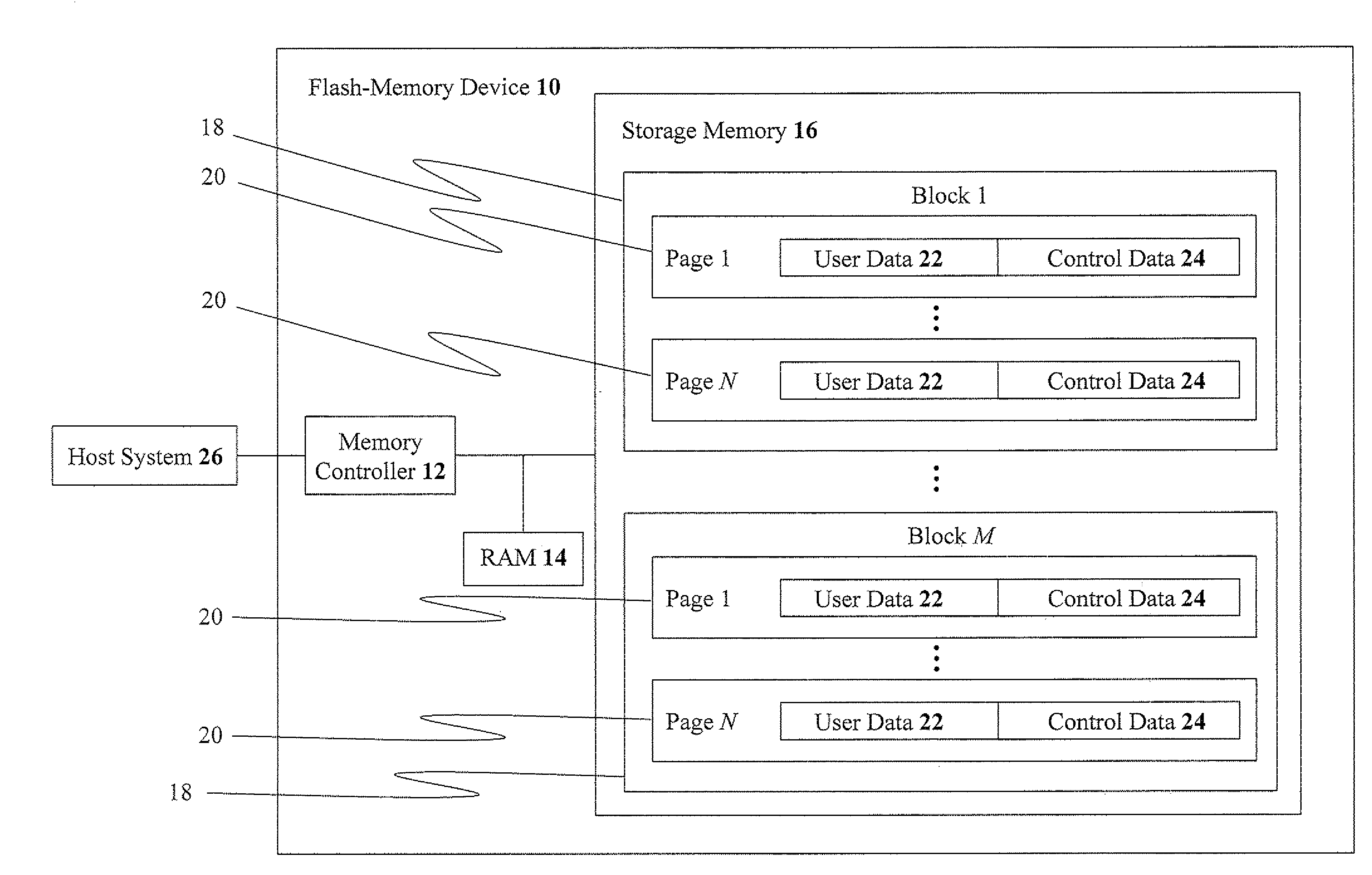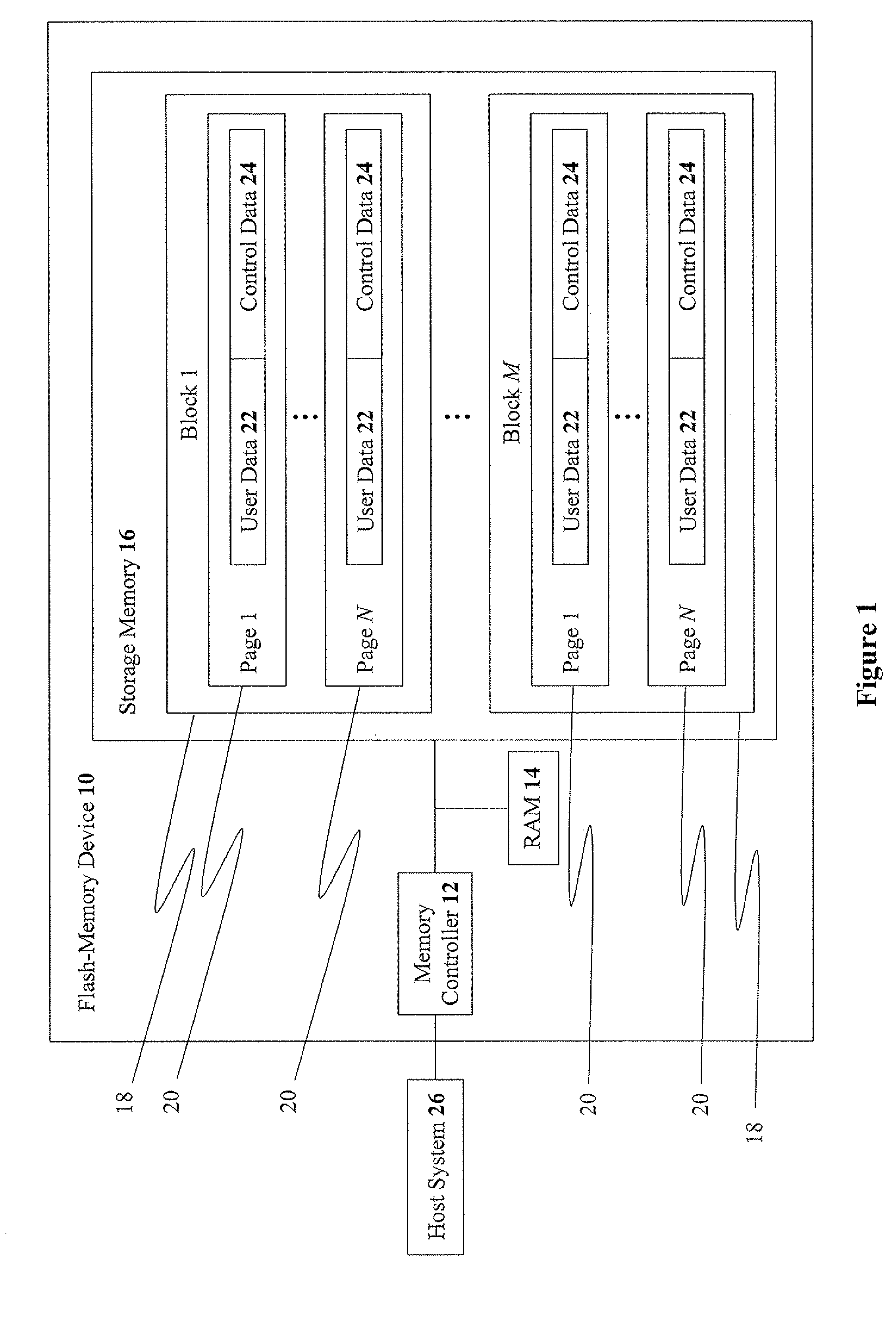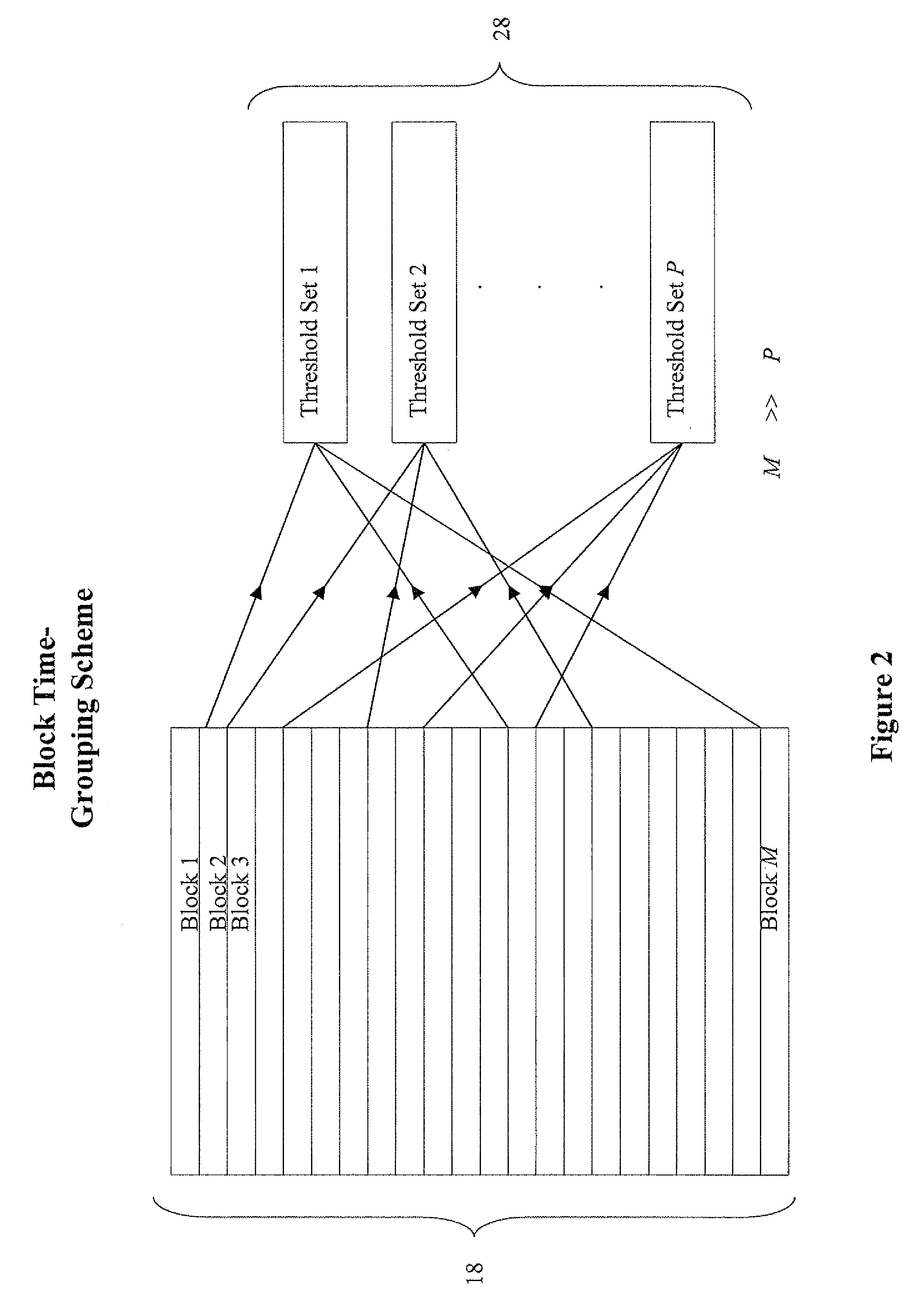Methods for tag-grouping of blocks in storage devices
a technology of storage devices and blocks, applied in the direction of memory adressing/allocation/relocation, instruments, error detection/correction, etc., can solve the problems of compromising and unable to arbitrarily erase a target page. , to achieve the effect of not sacrificing the accuracy of metadata values, sacrificing the accuracy or correctness of metadata
- Summary
- Abstract
- Description
- Claims
- Application Information
AI Technical Summary
Benefits of technology
Problems solved by technology
Method used
Image
Examples
Embodiment Construction
[0067]Embodiments described herein relate to methods for tag-grouping of blocks in storage devices, and storing control metadata in flash-memory systems. The principles and operation for tag-grouping of blocks in storage devices, according to embodiments described herein, may be better understood with reference to the accompanying description and the drawings.
[0068]Various embodiments of methods and systems disclosed herein are particularly useful for a certain class of metadata types. Page-specific metadata are dependent on page-writing time. Such metadata are referred to herein as “write-time-dependent metadata”. The read reference voltages metadata mentioned above as one example of page-specific metadata are write-time-dependent, as the value of the drift, and consequently the value of the read reference voltages expected to offset the drift, is dependent on the time of writing the page. However, not all page-specific metadata are write-time-dependent. The error correction parity...
PUM
 Login to View More
Login to View More Abstract
Description
Claims
Application Information
 Login to View More
Login to View More - R&D
- Intellectual Property
- Life Sciences
- Materials
- Tech Scout
- Unparalleled Data Quality
- Higher Quality Content
- 60% Fewer Hallucinations
Browse by: Latest US Patents, China's latest patents, Technical Efficacy Thesaurus, Application Domain, Technology Topic, Popular Technical Reports.
© 2025 PatSnap. All rights reserved.Legal|Privacy policy|Modern Slavery Act Transparency Statement|Sitemap|About US| Contact US: help@patsnap.com



